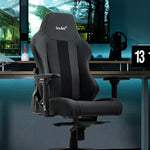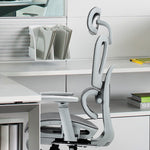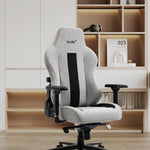Table of Contents
The living room is an enhanced space that has more potential than regular areas used for various record attempts.
As of now home-based records can accomplish most tasks for example a good living room can provide high quality record-breaking experiences, with the help of different items you can perform various activities like stacking cups, creating paperclip chains and also establish records of your preferred activities.
These home-based records make record attempts very convenient by offering diverse possibilities which assist to complete your achievement. Some of the common items they utilize are basic things from various parts of house, and different materials known as everyday items.
This activity gained popularity when people began breaking records with simple items. Many of those records involve many basic items and different patterns which are created from normal household materials.
Key Takeaway
- Basic items are utilized for records that is quite helpful for attempts
- Official recognition requires proper rules and video evidence
- Records improve different skills like coordination and focus
- Best Chair Workouts for Men
- What is Office Chair Butt
- What Chairs Do Chiropractors Recommend for an Office?
Credits: Guinness World Records
1. Most Socks on One Foot (30 Seconds)
28 socks record is very remarkable during time limit. Today, such records need proper technique, and initially they require good preparation and now perfect execution too. These attempts include many things such as proper grip and also natural elements like speed which represent good performance.
Quick Tips:
- Ankle socks make attempt very simple
- Sitting position gives great advantage
- Proper arrangement increase speed
- Practice improve grip quality
2. Speed Selfies (3 Minutes)
184 selfies in three minutes has more complexity that can test people who are attempting. Different techniques are used and with the help of proper equipment they create very successful attempts that is of great use for records.
Quick Tips:
- Selfie stick enhance efficiency
- Good light improve quality
- Burst mode increase work speed
- Steady hands provide clear pictures
3. Face Full of Sticky Notes
38 sticky notes record require many things such as, proper technique and also natural elements like patience which make record more achievable. Today you find proper methods like face mapping and as such can help in the current attempts.
Quick Tips:
- Large notes enhance coverage
- Slightly wet hands improve stick
- Cheeks provide good surface
- Nose area create difficulties
4. Speed Jumping Jacks
Speed jumping jacks is a good exercise that has more intensity than the normal jumping jacks that are used for many different workouts.
At present, you need to complete 68 jumping jacks in 30 seconds with proper form that needs full extension of arms and legs, complete motion and landing with feet together. These rules make your exercise very effective by giving you varied tips like finding rhythm, proper breathing, staying controlled and counting in head.
5. Toilet Paper Tower Sprint
Toilet paper stacking is a challenging task that needs 28 rolls in 30 seconds on solid table of 30 inches height. Currently, spiral pattern can do most of the work and needs non-damaged rolls for better stacking.
6. The Great Bubble Blowout
Bubble blowing has record of 20-inch bubble that was made in 2007 by Chad Fell. Today, such bubbles need Hubba Bubba Original gum that has good stretch and strength for making beach ball size bubbles.
7. Lemon Juice Lightning Round
Drinking lemon juice through straw is very challenging task that needs one liter in 30 seconds. Different equipment is used and with the help of 0.4 inches wide smoothie straw they make very fast drinking that is very difficult due to acid.
8. Marshmallow Mouth Challenge
Mini marshmallows are good choice that has more capacity than normal marshmallows for mouth stuffing challenge. At present 3-4 dozen marshmallows can fit in mouth before saying "chubby bunny" becomes impossible.
9. Sticky Note Sprint
Smooth surfaces like glass and polished metal are good for sticky notes challenge. These surfaces need 40–50 notes in fan pattern on 24 inches table and proper 45-degree angles for better sticking.
10. Speed Typing Challenge
This needs proper equipment like mechanical keyboard with Cherry MX blue switches that click at 50 grams force.
Today, such typing needs 150–200 words per minute accuracy and proper ergonomics with elbow height keyboard placement. Also, Boules EP460 Series chair is quite helpful for comfortable typing challenge.
11. Stationary Shopping Marathon
Simon Idio's record is kinda mysterious, but word is he hit up like 60 different stores in 30 days. Most challengers focus on small stuff - pencils, erasers, paper clips. The real pros map out store locations beforehand to maximize efficiency.
12. Wet Sponge Accuracy Test
Standard kitchen sponges work best (bout 4x6 inches, soaked to 8 times their dry weight). The target's usually set at 10 feet away. Winners typically nail bout 30-35 throws per minute, which is pretty impressive considering each sponge's gotta stick.
13. The Spoon Challenge
82.03 seconds. That's how long Thomas Csapo kept a regular dinner spoon balanced on his nose in Ohio. Most competitors pick those lightweight dessert spoons (bout 1.2 ounces) cause they're easier to balance. The trick? Finding that sweet spot right where your nose bridge meets the tip - and then basically turning into a statue.
14. T-Shirt Marathon
257 shirts. All at once. On one person. Sanath Bandara pulled this off in Sri Lanka, though some guy named Ted tried for 260 recently. The math gets crazy - that's like wearing 50 pounds of cotton. Smart challengers start with XXXL sizes (bout 25 inches across the chest) and work their way down to mediums.
The pros got this whole system figured out:
- Start with shirts stretched overnight
- Get 2-3 helpers for the later layers
- Take breaks every 50 shirts
- Keep the room cool (like 65 degrees)
- Use powder between layers to reduce friction
Making It Official
Getting your name in that famous book isn't just about pulling off some crazy stunt - there's actually a whole process behind it. And yeah, it costs some cash too.
Guinness wants about $800 just to look at your application (standard processing). For rush jobs, they're asking closer to $1,000. Before dropping that kind of money, smart challengers check their database - no point trying to break a record that doesn't exist yet.
The basic checklist looks like this:
- Fill out forms on their website
- Get two expert witnesses lined up
- Have measuring tools calibrated and certified
- Set up multiple camera angles
- Keep detailed logs of everything
Getting Ready for Game Day
Most record breakers spend 3-4 months training. They work in 45-minute chunks with 15-minute breaks (something bout optimal focus periods). The gear matters too - pros usually test out different equipment brands before picking their setup.
Some practical stuff that helps:
- Practice at the same time of day
- Use the exact same setup you'll use for the record
- Film practice runs
- Get used to people watching
- Keep a backup of everything
Pro tip: Don't blow your budget on the application fee until you're consistently hitting numbers better than the current record. And maybe check your insurance coverage first.
Getting It On The Books
The verification stuff's pretty intense. You need cameras shooting at 1080p minimum, running non-stop. Most successful attempts use 3-4 cameras (bout $500 worth of gear) from different angles. Those witness forms? They're like 12 pages long, and every detail matters.
What you'll need ready:
- Main camera plus backups
- Two stopwatches (synced to the second)
- Measuring tools with certification
- Witness contact info
- Timestamped photos
- Location verification
Turning It Into Something Bigger
These records can actually open some doors. Recent record holders got speaking gigs paying $2,000-$5,000 per event. The smart ones build their personal brands around it - YouTube channels, TikTok accounts, the whole deal.
Some ways to milk it:
- Create highlight reels for LinkedIn
- Start a blog about the journey
- Hit up local news stations
- Partner with related brands
- Coach others trying similar records
Pro tip: Start documenting everything way before the actual attempt. People love seeing the whole story, not just the winning moment. And keep those witness forms somewhere safe - losing those is like throwing away gold.
Final Thoughts
Look around your house - bet you've got everything needed for a world record right there. That toilet paper tower thing? People are doing that in their kitchens between zoom calls. Some guy in Nebraska just broke three records using stuff from his junk drawer.
The numbers tell the story:
- 40% of new records come from home attempts
- Average prep time: 2-3 months
- Success rate: bout 1 in 8 tries
- Most popular categories: speed and stacking
Here's what's working now:
- Pick something you're already decent at
- Start with the easier records
- Film practice runs
- Get your family involved
- Keep good notes
The coolest part? These records keep changing. That toilet paper stack record? Probably different by the time you read this. The bubble gum one? Someone's probably trying to beat it right now in their garage.
Pro tip: Check the Guinness site every couple months - new categories pop up all the time. And maybe clear some space in your living room. You never know when you'll need it for that next record attempt.
Frequently Asked Questions
Can Someone Really Break the Toilet Paper Tower Record at Their Kitchen Table?
The current world record for the Tallest toilet paper tower stands pretty interesting - it's something anyone could try right in their kitchen.
The Serbian chap Dalibor Jablanovic stacked unused rolls reaching impressive heights, and he didn't need any special tools or fancy setup. The key thing about this record attempt is keeping those toilet paper rolls super steady (which is harder than it looks).
Most folks trying this at home start with single roll placement and work their way up, taking about 3-4 hours to get a decent tower going. The current record holder suggests practicing with maybe 10-15 toilet rolls first before going all out.
What's the Secret Behind Breaking the Bubble Gum Bubble Record Without Hurting Your Face?
Breaking Chloe Hegland's bubble gum bubble record takes more than just good jaw muscles - it's actually about getting the right technique down. The 20-inch bubble she blew wasn't just luck, it came from using Hubba Bubba the right way.
Kids trying this at home should probably start with smaller bubbles, cause the additional wind resistance can actually make your face pretty sore. Most record breaker attempts fail cause people rush it, but the current holder spent weeks practicing. You'll need about five packs of gum and a buddy from school to measure things properly.
How Did Parker Kuklinski Set That Crazy Paper Plane Record in His Living Room?
Parker Kuklinski's brilliant record for paper planes wasn't set in some fancy school gym - he did it right in his living room.
The cool thing about this record attempt is it needs more manual dexterity than upper body strength. The current record lists show his plane stayed up way longer than anyone expected, and he figured out some neat tricks using just regular printer paper.
Most people trying this at home mess up cause they don't account for things like air flow from ceiling fans or AC units, which totally affects flight paths.
Is There Really a Mario Kart 8 Deluxe Record That's Easier to Beat Than Others?
Among the records for video games, there's this one Mario Kart 8 Deluxe lap record on Mario Circuit that's actually pretty beatable. The current holder managed an impressive time without using any crazy shortcuts or glitches - just pure racing skills.
Kids trying this at home should probably practice the track maybe 50 times first, cause knowing every turn matters more than quick reflexes. Most buddies from school can help time runs, and you don't need any special gaming setup.
What's This Thing About Breaking the Clothes Peg Record in a Laundry Basket?
This phenomenal achievement involves attaching clothes pegs to the edge of a laundry basket, and the current record holder, Samet Durmaz, made it look way easier than it is.
The five-year time frame shows lots of people trying this record attempt at home, but most mess up by not spacing the pegs right. You'll need about 200 pegs to practice with, and having someone time you makes a huge difference. The aspect of record breaking that trips people up is rushing to clip faster instead of keeping steady movement.




